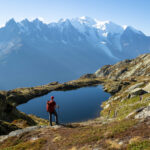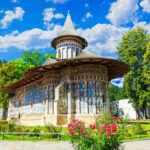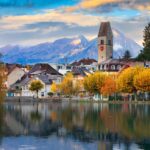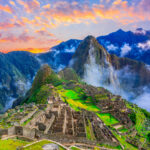What is Inca Trail – a bucket-list adventure for hikers and history enthusiasts
The Inca Trail is one of the most iconic trekking routes in the world, a 26-mile (43-kilometer) path winding through the Andes Mountains of Peru to the breathtaking citadel of Machu Picchu. Built over 500 years ago by the Inca Empire, this ancient trail was part of an extensive network of roads connecting settlements across what is now Peru, Ecuador, Bolivia, Argentina, and Chile. Today, the “Classic Inca Trail”—a four-day trek starting at Kilometer 82 near Ollantaytambo and ending at the Sun Gate (Inti Punku) overlooking Machu Picchu—is a bucket-list adventure for hikers and history enthusiasts alike.
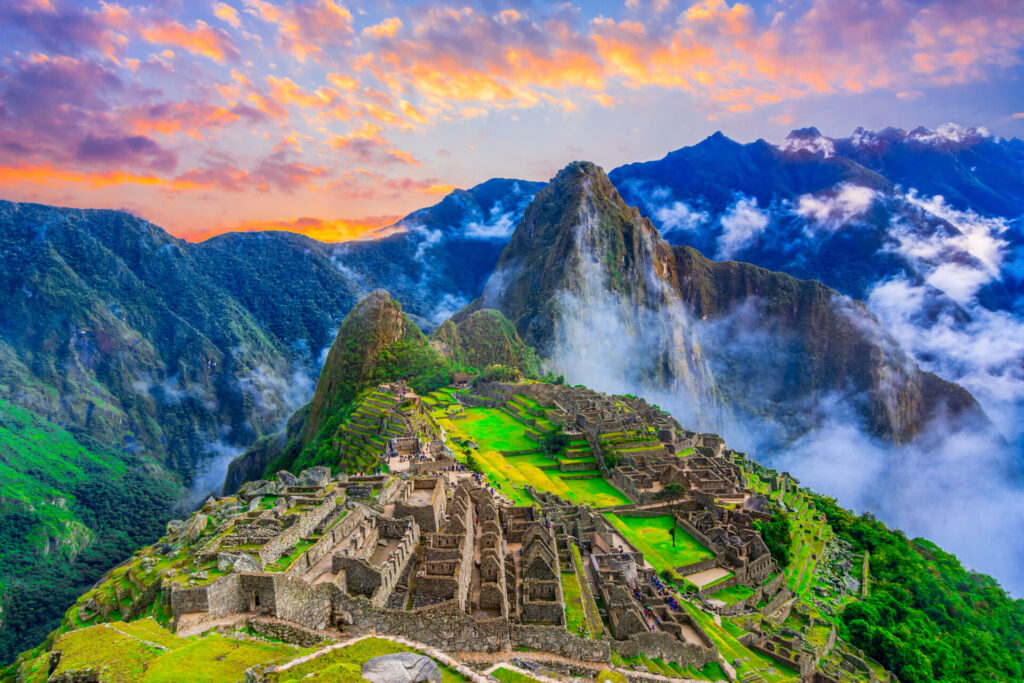
The trail takes you through a stunning variety of landscapes: lush cloud forests, rugged mountain passes, and high-altitude plains, with elevations ranging from 7,970 feet (2,430 meters) at the starting point to 13,828 feet (4,215 meters) at Dead Woman’s Pass, its highest point. Along the way, you’ll encounter archaeological treasures like Llactapata, Sayacmarca, Phuyupatamarca, and Wiñay Wayna—Inca ruins that offer a glimpse into the ingenuity and spirituality of this lost civilization. The trek culminates in an unforgettable arrival at Machu Picchu, often at sunrise, when the mist lifts to reveal the ancient city framed by jagged peaks.
This journey is not just about the destination; it’s a physical and cultural immersion. The trail’s challenging ascents and descents test your endurance, while the stories of Inca history—shared by guides or whispered by the stones themselves—deepen your appreciation for the land. However, with only 500 permits issued daily (including porters and guides), planning is essential, as spots fill up months in advance. Whether you’re drawn by the promise of adventure, the allure of history, or the sheer beauty of the Andes, the Inca Trail delivers an experience that lingers long after the final step.
Best Tour Operators for an Inca Trail Tour
Choosing the right tour operator can make or break your Inca Trail experience. With over 200 licensed companies in Peru, options abound for guided or self-guided treks, luxury or budget accommodations, luggage transfers, and itineraries tailored to specific highlights. (Note: Self-guided treks aren’t technically allowed—Peruvian law requires a registered guide—but some operators offer more independent-feeling experiences.) Below, I’ve highlighted some of the best operators based on their offerings, reputation, and traveler feedback, catering to a range of preferences.
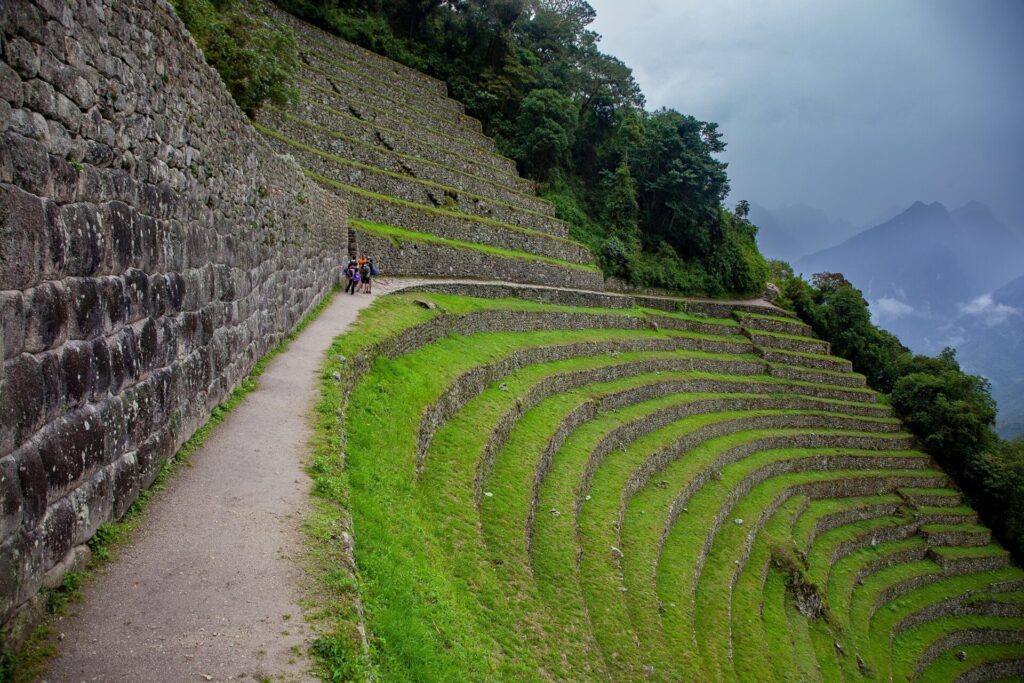
1. Alpaca Expeditions
- Why They Stand Out: Known as Peru’s #1 tour operator, Alpaca Expeditions blends top-notch service with a commitment to ethical practices, including fair porter treatment and employing female guides.
- What They Offer:
- Guided Tours: Small groups (up to 16, often 8-10) with expert guides who share Inca history and culture.
- Accommodations: Camping in quality tents; luxury options include glamping with cots and gourmet meals.
- Luggage Transfers: Porters carry up to 6 kg of your gear, leaving you free to hike with a daypack.
- Highlights: The classic 4-day trek includes all major ruins, with a focus on the Sun Gate sunrise at Machu Picchu. They also offer shorter 2-day treks and alternatives like the Salkantay route.
- Cost: Around $790 for the 4-day classic trek, all-inclusive.
- Best For: Budget-conscious travelers seeking a reliable, socially responsible guided experience with moderate comfort.
2. Evolution Treks Peru
- Why They Stand Out: A leader in ethical tourism, Evolution Treks emphasizes fair wages for porters (including women) and sustainable practices, earning accolades for its Andean reciprocity ethos.
- What They Offer:
- Guided Tours: Small groups (max 8) for a personalized feel.
- Accommodations: Luxury camping with gourmet meals; their 5-day luxury trek avoids crowded campsites.
- Luggage Transfers: Porters handle gear, and portable toilet tents add convenience.
- Highlights: Less-visited Inca sites like Runkurakay and exclusive campsites, plus a deep dive into Andean culture.
- Cost: Higher-end, with luxury treks starting at $1,200+.
- Best For: Eco-conscious hikers wanting a luxurious, intimate guided trek off the beaten path.
3. TreXperience
- Why They Stand Out: Founded by a former guide, TreXperience combines local expertise with excellent reviews for personalized service and sustainability.
- What They Offer:
- Guided Tours: Groups up to 16, with options for private treks.
- Accommodations: Camping or luxury glamping with hot showers and chef-prepared meals.
- Luggage Transfers: Porters carry your gear; free luggage storage in Cusco for extra bags.
- Highlights: The 4-day classic trek hits all key ruins, with add-ons like cooking classes to immerse you in Peruvian culture.
- Cost: Starts at $700-$800 for the classic trek.
- Best For: Adventurers seeking a guided cultural experience with flexible comfort levels.
4. View Peru (Luxury Inca Trail Tours)
- Why They Stand Out: Specializing in high-end treks, View Peru offers a “glamping” experience fit for royalty, perfect for honeymoons or special occasions.
- What They Offer:
- Guided Tours: Private, customizable treks with expert guides.
- Accommodations: Deluxe campsites with cots, linens, hot showers, and gourmet dining.
- Luggage Transfers: Private porters handle everything, ensuring a light load.
- Highlights: Focus on Machu Picchu’s grandeur, with optional Sacred Valley or Rainbow Mountain extensions.
- Cost: $1,500+ for 4 days, reflecting the premium service.
- Best For: Luxury travelers wanting a guided, pampered trek with all the trimmings.
5. G Adventures
- Why They Stand Out: An international operator with a strong reputation, G Adventures offers a range of Inca Trail tours, from budget to upscale, with a focus on group dynamics.
- What They Offer:
- Guided Tours: Small groups (8-16) with experienced guides; some trips include Cusco acclimatization days.
- Accommodations: Camping with basic gear; upscale options available.
- Luggage Transfers: Porters carry 6 kg of your gear.
- Highlights: The 7-day tour blends trail time with cultural stops, like Sacred Valley villages; shorter 4-day options focus on the classics.
- Cost: $700-$1,200, depending on length and inclusions.
- Best For: Social travelers wanting a guided group experience with flexible pricing.
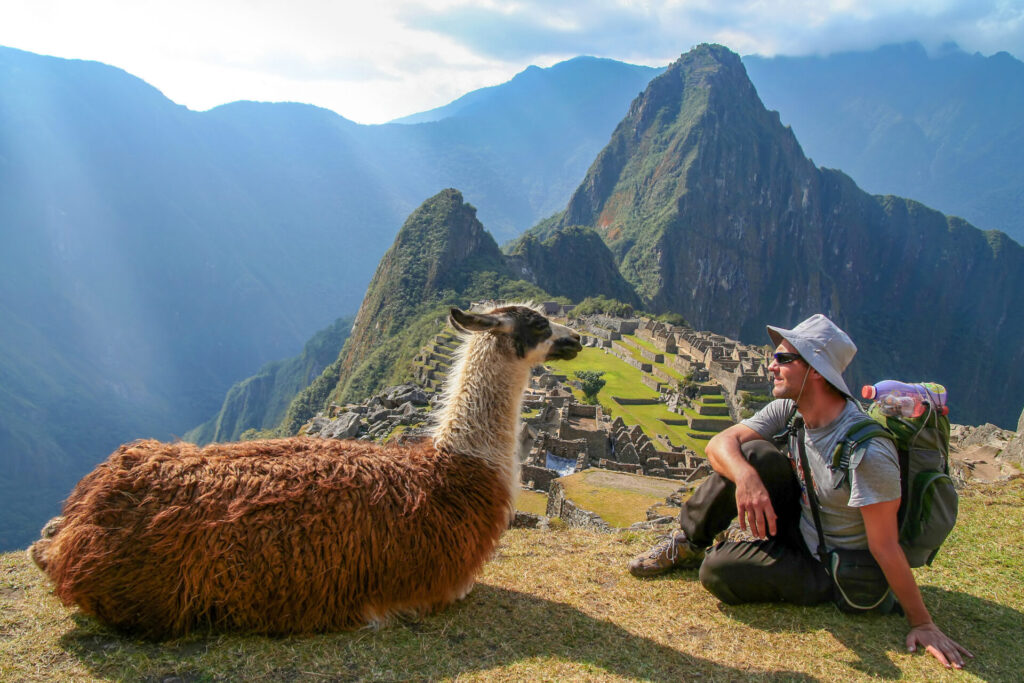
6. Enigma Adventure
- Why They Stand Out: A Cusco-based specialist in luxury and adventure, Enigma caters to those who want a chic, tailored trek.
- What They Offer:
- Guided Tours: Private or small-group (up to 16) options.
- Accommodations: High-end camping or hotel stays where possible.
- Luggage Transfers: Porters manage gear, with a focus on comfort.
- Highlights: Customizable itineraries spotlighting sites like Wiñay Wayna or Machu Picchu’s quieter corners.
- Cost: $1,600+ for a 5-day luxury trek.
- Best For: Well-heeled hikers seeking a guided, upscale adventure with flexibility.
7. Macs Adventure
- Why They Stand Out: While not Peru-based, Macs Adventure excels in “self-guided” style treks (with a required guide), offering independence with logistical support.
- What They Offer:
- Self-Guided Tours: Detailed route notes and apps, with a guide for compliance; less structured than fully guided tours.
- Accommodations: Mix of hotels and huts; budget-friendly options available.
- Luggage Transfers: Optional porter services.
- Highlights: Shorter 2- or 4-day treks focus on key sites like the Sun Gate and Machu Picchu.
- Cost: Around $500-$800, depending on customization.
- Best For: Independent spirits wanting a budget-friendly, semi-guided trek with logistical ease.
Choosing Your Perfect Inca Trail Experience
- Guided vs. Self-Guided: Guided tours (e.g., Alpaca, Evolution, G Adventures) offer expertise and camaraderie, ideal for first-timers or those craving historical context. “Self-guided” options like Macs Adventure provide more freedom but still include a guide for safety and legal reasons.
- Luxury vs. Budget: Luxury operators (View Peru, Enigma) deliver glamping, gourmet food, and exclusivity, while budget-friendly choices (Alpaca, TreXperience) keep costs down without skimping on essentials.
- Luggage Transfers: Most operators include porter services, carrying 6-10 kg of your gear—crucial for easing the trek’s physical demands.
- Specific Highlights: Want to linger at Wiñay Wayna or explore quieter ruins? Evolution Treks and Enigma excel at customization, while classics like Alpaca hit all the must-sees.
Why You Can’t Go Solo with Your Tent on Inca Trail
The Inca Trail is a once-in-a-lifetime journey, and the right operator can tailor it to your dreams—whether that’s a rugged budget hike or a lavish Andean escape. Book early (permits for 2025 open in October 2024), and prepare for an adventure that blends nature, history, and personal triumph. Which will you choose?
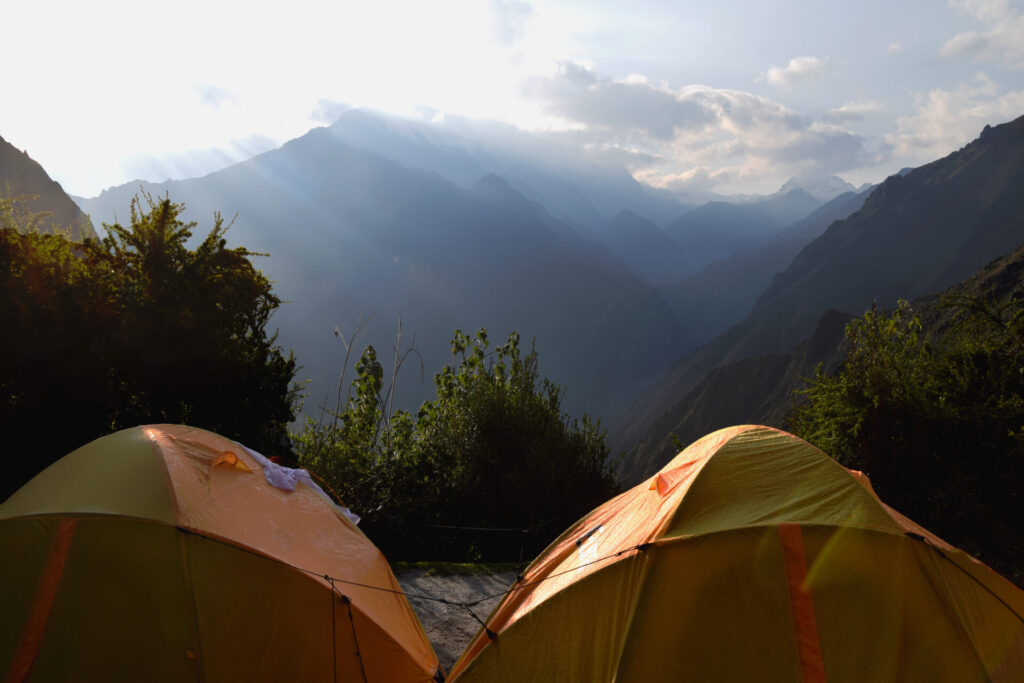
Trekking the Inca Trail entirely on your own with your own tent isn’t possible due to strict regulations enforced by the Peruvian government. Since 2001, the Classic Inca Trail to Machu Picchu (the 26-mile, 4-day route starting at Kilometer 82) has required all hikers to be accompanied by a licensed guide and to book through an authorized tour operator. Additionally, independent camping with your own gear isn’t allowed—campsites are managed, and equipment is typically provided or regulated by the operator. Here’s why and what your options are:
- Permit System: Only 500 permits are issued daily (about 200 for trekkers, 300 for guides/porters), and these must be secured through a licensed operator months in advance. You can’t obtain a permit as an individual.
- Mandatory Guides: Peruvian law mandates that all trekkers have a registered guide for safety, environmental protection, and cultural preservation. Solo hiking is prohibited.
- Camping Restrictions: The designated campsites (e.g., Wayllabamba, Pacaymayo, Wiñay Wayna) are controlled by the government and operators. You can’t pitch your own tent outside these areas, and operators handle tent setup and logistics.
- Porter Regulations: Gear like tents, food, and supplies is typically carried by porters hired through the operator, not by trekkers themselves.
Closest Alternatives to Going Solo
If you’re set on a more independent experience with your own gear, here are your best bets:
- Self-Guided Style with an Operator: Companies like Macs Adventure or Alpaca Expeditions offer “self-guided” treks where you get detailed route info and some autonomy, but a guide is still present (required by law). You’d need to use their tents, though—bringing your own isn’t an option due to logistical and regulatory constraints.
- Short Inca Trail (2 Days): This 10-mile trek from Kilometer 104 to Machu Picchu skips overnight camping entirely, requiring only a day permit and a guide. You’d hike with your daypack and stay in Aguas Calientes, but no tent is involved.
- Alternative Routes: Trails like the Salkantay Trek, Lares Trek, or Choquequirao Trek have fewer restrictions. While still requiring permits and often a guide through operators, some sections allow more flexibility. For instance:
- Salkantay Trek: A 46-mile, 5-day alternative to Machu Picchu. You can find operators (or local guides in Cusco) who might let you use your own tent at certain campsites, though most still provide gear. Solo trekking is technically possible on less-regulated sections, but you’d need to navigate permits and logistics yourself.
- DIY Approach: Hire a private guide and porters directly in Cusco (still through an operator) and negotiate a minimal-support trek. You’d carry your own gear, but the guide requirement remains, and they’d likely insist on their tents for consistency.
Practical Considerations
- Gear: Even if you could bring your tent, the trail’s steep, narrow paths and high altitude (up to 13,828 feet) make carrying heavy equipment tough. Porters typically haul 15-20 kg, leaving trekkers with light daypacks.
- Cost: Solo-style treks with minimal support might still run $500-$700, as permits, guides, and basic logistics are non-negotiable.
- Risks: Without a guide, you’d miss navigation cues (the trail isn’t always well-marked), historical context, and emergency support—reasons the rules exist.
Meet Alexander: The Heartbeat Behind ‘A Country A Month’
Journeying through the pages of A Country A Month, you might often feel the rhythm of a storyteller’s heartbeat, pulsating through each line, each image, and each adventure shared. That heartbeat belongs to none other than our remarkable website editor, Alexander.
With a lens in one hand and a pen in the other, Alexander seamlessly marries his passions for photography and writing. His eye captures moments that words can barely describe, yet his eloquence brings those images to life, transcending borders and connecting us all through shared stories. An avid traveler, every country he’s visited has added another chapter to his expansive tale, and through our platform, he generously shares these chapters with us.
His prowess with WordPress ensures that our readers get a seamless and engaging experience every time they land on our website. But beyond the technicalities, what truly sets Alexander apart is his authentic passion for the places he writes about. He doesn’t just tell you about a destination; he takes you there, guiding you through its nooks and crannies with an intimacy only a genuine explorer possesses.
Join us in appreciating Alexander, the guiding spirit of A Country A Month, as he continues to chart new territories, uncover hidden gems, and weave narratives that resonate with wanderers worldwide.
